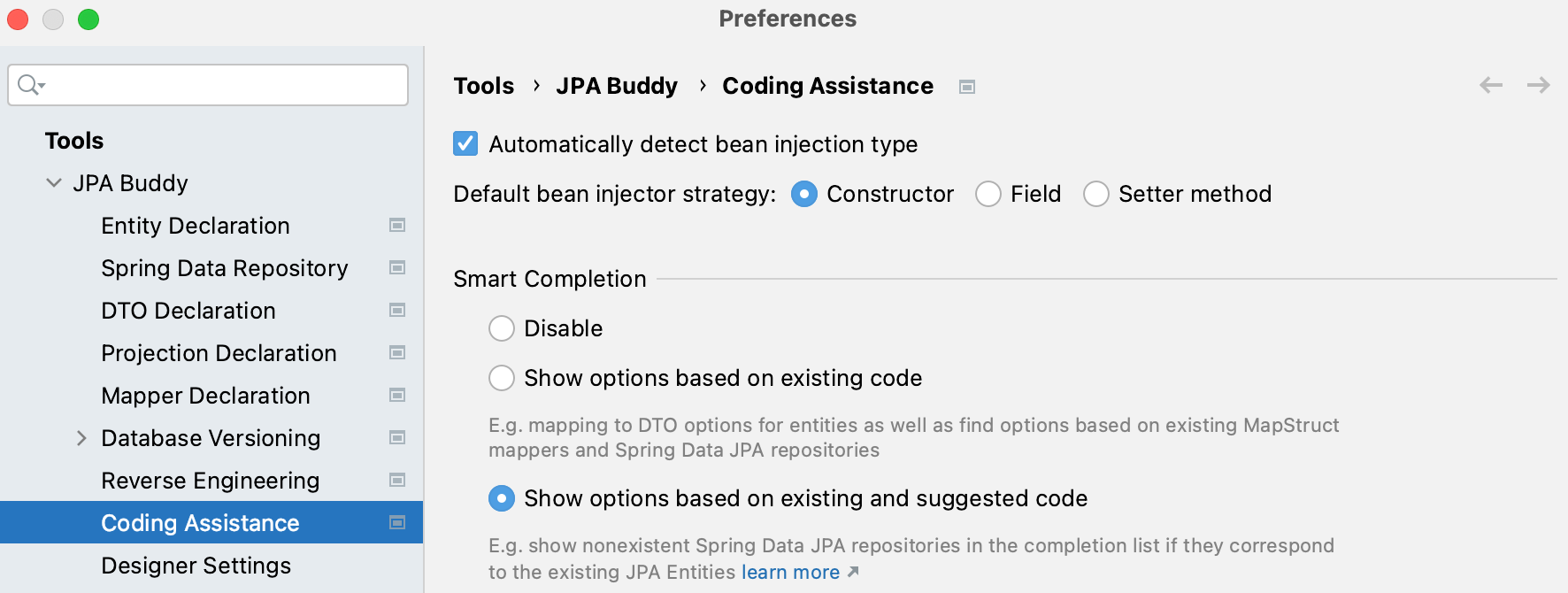Coding Assistance
Introduction
JPA represents the anemic domain model pattern. So, usually, the main domain objects are layered as follows:
- Entities contain only data
- Spring Data repositories declare CRUD operations for entities
- DTOs and mappers that transfer entities to their DTOs
Such segregation looks natural because each layer has its clear responsibility area. However, it brings additional complexity during development due to bad discoverability for different operations available over entities.
JPA Buddy addresses this problem by integrating a lot of coding assistance features for JPA entities, Spring Data repositories, DTOs and MapStruct mappers that make development more straightforward and transparent.
Code Completion
Generate & Inject Spring Data JPA Repositories
To create a new Spring Data JPA repository just start typing the repository name that begins with the entity name (1). Then, the repository wizard will open.
By following the same coding style, you can also inject an existing Spring Data JPA repository (2). Just start typing the existing repository name and JPA Buddy will find it.
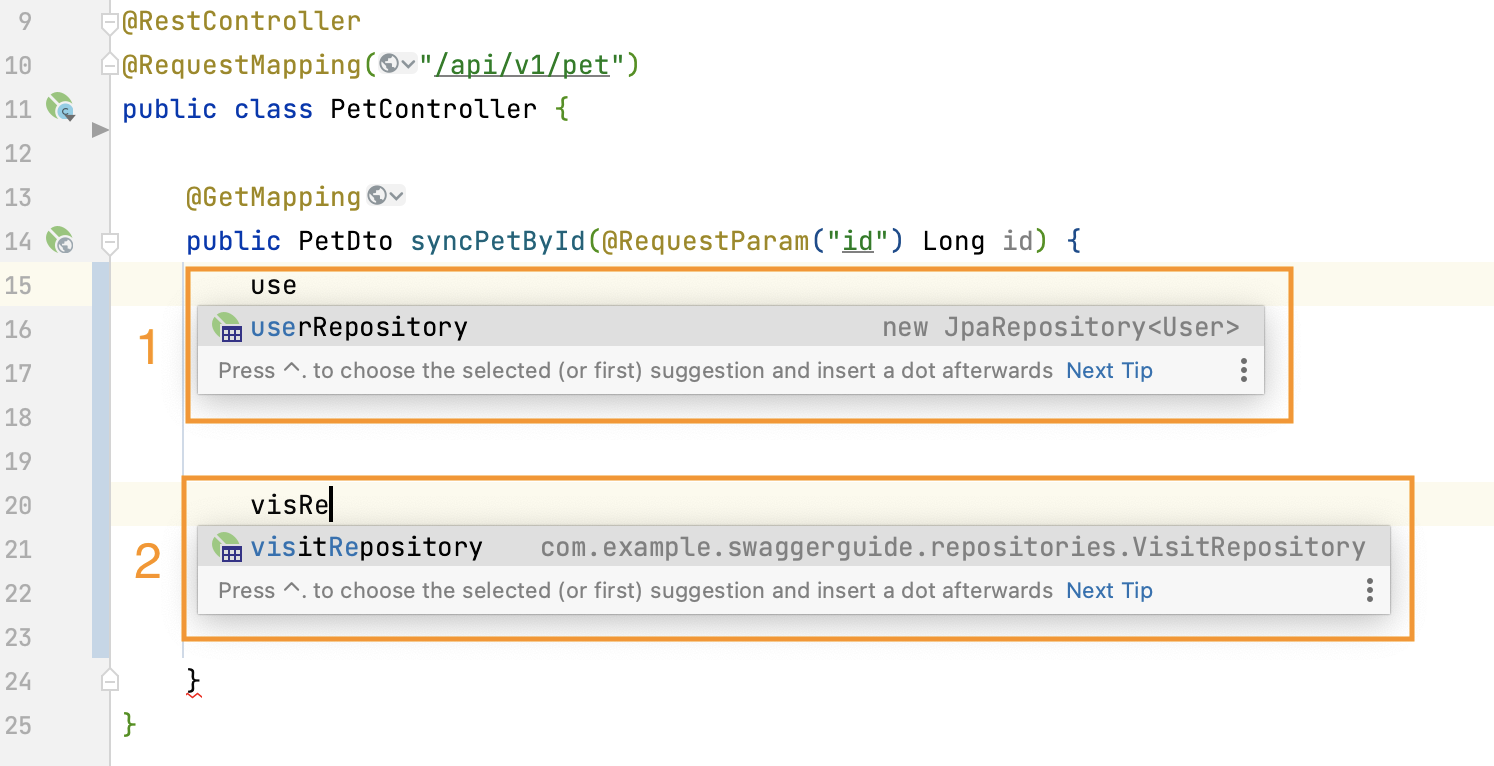
According to your injection settings, JPA Buddy will inject the repository into the current class. The example below shows constructor based injection:
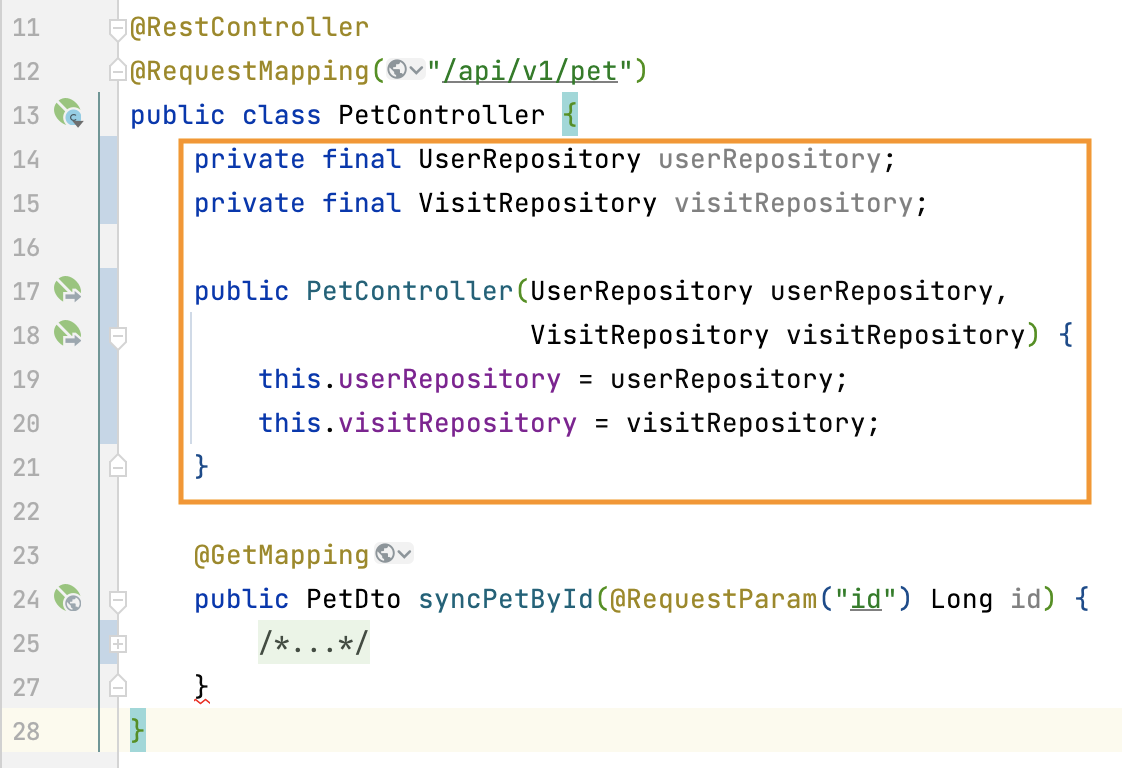
Generate & Call Methods/Queries
With JPA Buddy, you don't need to switch focus between multiple editors. It allows you to call query visual designers right from here:

Also, you can find/create repository methods via entity class name call:
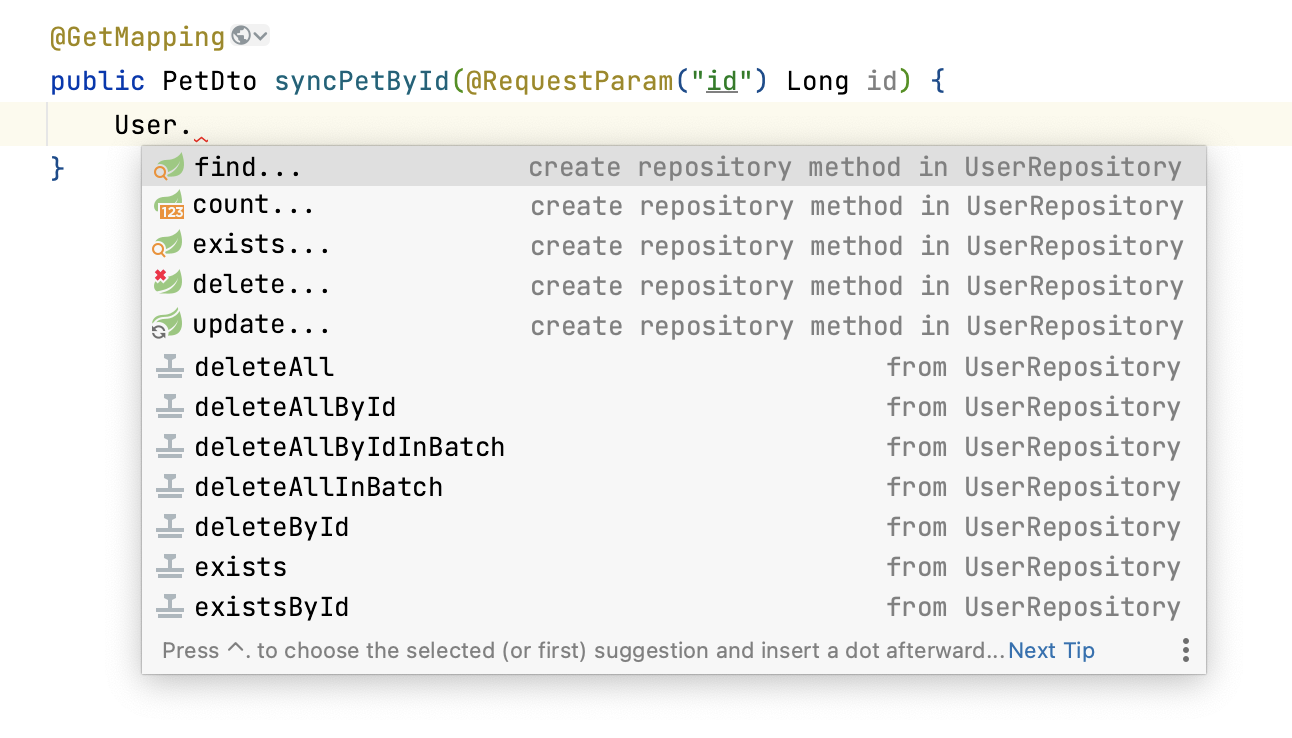
Generate & Inject MapStruct Mappers
JPA Buddy is able to generate MapStruct mapper, inject it, and scaffold a proper mapping call. Use "mapTo..." option to generate a new mapper, or apply methods from existing ones (e.g., "mapToPetDto" for the example below). This feature works for both: single instances and collections of entities or DTOs.

Here is the code that JPA Buddy will generate after selecting the "mapToPetDto" option:
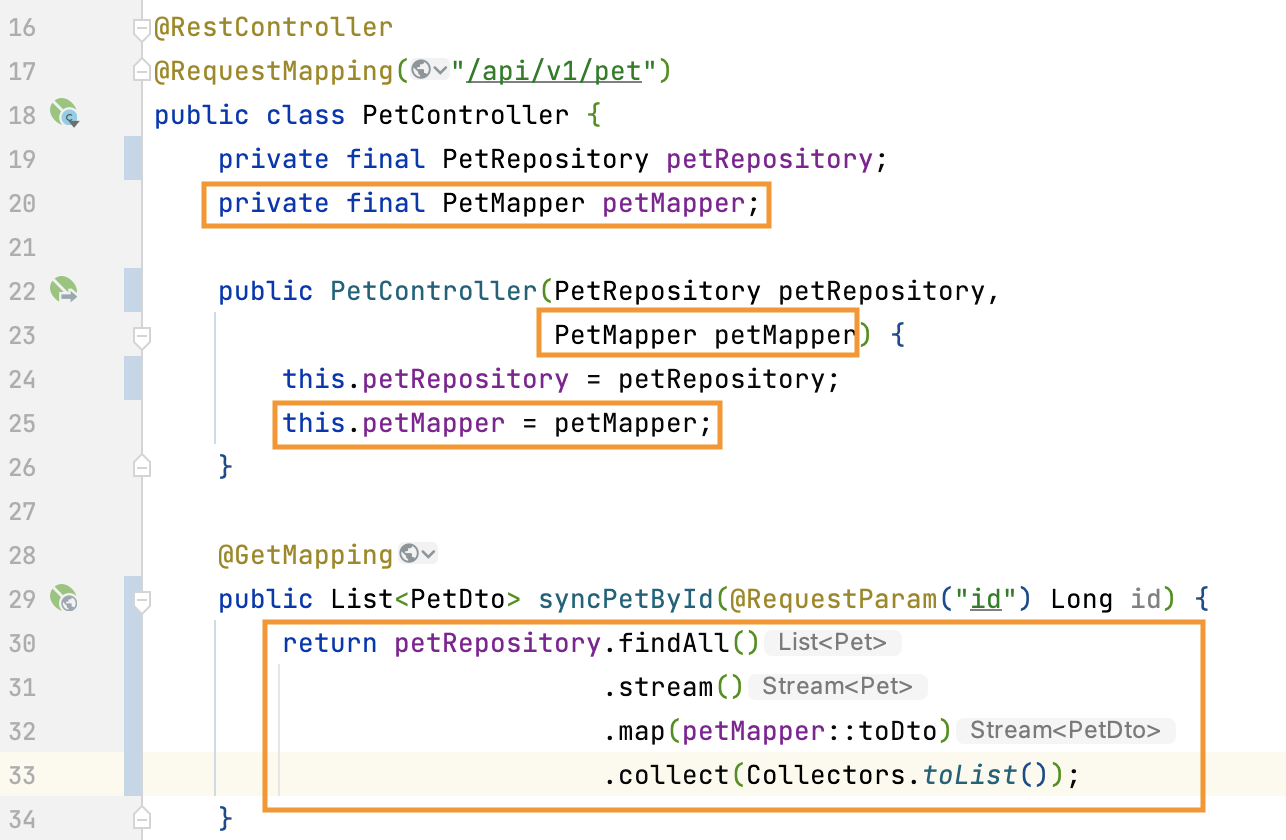
Generate JPA related objects from unresolved references
Some developers may choose to declare an object before implementing it. JPA Buddy will help those developers who adhere to this programming style. It suggests creating:
- Spring Data JPA Repository – in case the reference ends with the value specified in the Spring Data Repository settings. Default value is "Repository".
- Projection – in case the reference ends with the value specified in the Projection declaration settings. Default values are: "Info", "Prj", "Projection", "VO", "Vo", "View", "Request", "Browse".
- DTO – in case the reference ends with the value specified in the DTO Declaration Settings. Default value is "Dto".

Then, corresponding wizards will open.
Kotlin Support
All the features that Java developers love are also available to Kotlin fans. Whether you're creating Spring Data repositories on the fly, injecting MapStruct mappers, or scaffolding method calls – JPA Buddy has got you covered. And if you're looking to create a REST endpoint in Kotlin, JPA Buddy makes it incredibly easy:
Settings
JPA Buddy provides flexible settings to make the use of coding assistance features even more handful. You can:
- Enable/disable automatic detection for bean injection type;
- Define the bean injection strategy that JPA Buddy will follow while code generation;
- Configure whether to use the smart completion features or not.
